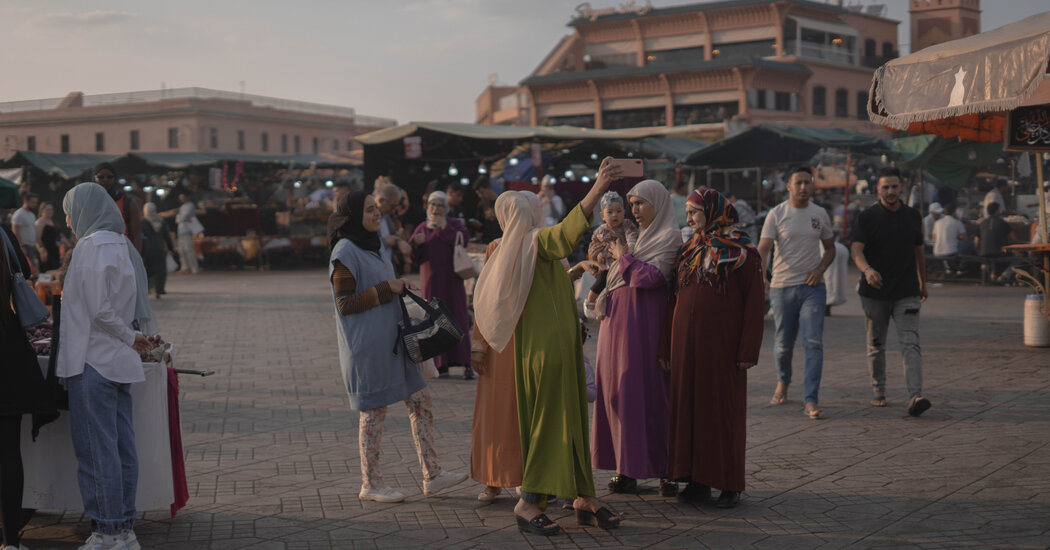The wail of snake charmers’ horns will lead you to your departure point: Jemaa El Fna. This carnivalesque, open-air market in the medina — the ancient neighborhood where Marrakesh was born — brims with juice stands, restaurants and souvenir shops, to say nothing of musicians and performers.
Before you embark on this meandering 2.2-mile walk, you should have water and sunscreen (summer temperatures can pass 100 degrees Fahrenheit in this Moroccan city); outfits that cover most of your skin (doubly useful in Islamic societies, which discourage revealing clothes); and a willingness to lose your bearings. Nearly twice the size of Central Park, the medina enfolds a vast spider web of passageways that seem designed to disorient outsiders.
A good strategy is to follow well-known thoroughfares while allowing ample time to duck through beckoning doorways or slip into side alleys. Succumbing to detours is essential. Making strict timetables is folly. If you lack a golden thread, a decent map will return you to the beaten path.
A compelling route from Jemaa El Fna that reveals multiple Marrakesh personalities starts at the white horseshoe archway leading to Rue Riad Zeitoun el-Kadim. Walking southward on the uneven cobbled street, you’ll encounter sensory stimulation at every step. Sounds of clip-clopping mule carts and portable radios blaring Arabic pop music mingle with smells — fresh-baked bread, foul drains, rosewater perfumes and spices.
Small shops and lone peddlers display their wares: palm-woven baskets, bottles of golden argan oil, silvery jewelry inlaid with colored stones. Many people wear floor-length caftans or hooded djellaba robes. You’ll see just as many sport jeans, sneakers and T-shirts.
The street opens onto the palm-lined Place des Ferblantiers, humming with cafes and crowds. Cross to the southern gate and behold the soaring battlements of El Badi Palace (70 dirhams admission, or about $6.85), a glorious 16th-century ruin that is now a peaceful place to wander. Stone paths, wooden catwalks and mosaic-tiled floors carry you over sunken gardens and through unburied, ruined chambers while storks look down from their nests atop the ramparts.
As you walk eastward along Rue Bahia Bab Mellah, you’ll pass residential lanes on your right. The one called Derb Talmud Tora leads to the former Jewish quarter, the Mellah, which was built in the 1500s to house the many Jewish refugees fleeing Spain after the defeat of the Moors in 1492. (Only around…
Click Here to Read the Full Original Article at NYT > Travel…
